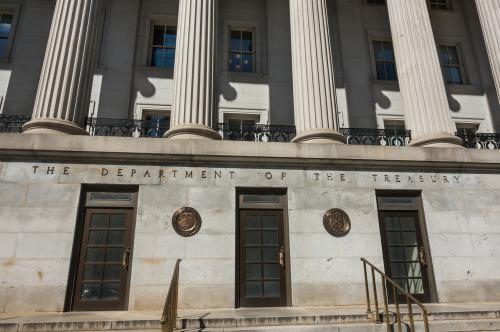This year’s monthly job gains and losses can indicate how the economy is doing once they are corrected to account for the seasonal patterns, using a process called seasonal adjustment. Each month in this blog, I apply an alternative filter that incorporates a longer window than the BLS. I argue for this alternative seasonal adjustment procedure in my paper “Unseasonal Seasonals?”
In addition to seasonal effects, abnormal weather can also affect month-to-month fluctuations in job growth. In my paper “Weather Adjusting Economic Data” I and my coauthor Michael Boldin implement a statistical methodology for adjusting employment data for the effects of deviations in weather from seasonal norms. We use several indicators of weather, including temperature and snowfall.
The alternative seasonal adjustment and weather adjustment rely on a replication of the BLS’s seasonal adjustment procedure, and once per year the BLS updates its seasonal adjustment procedure, a process which takes a considerable amount of time to replicate. Therefore, the usual updates to the data will be a bit delayed this month.
However, the adjustment for the effects of unusual weather depends almost entirely on the weather data, which we do have in hand. We can estimate the effect of unusual weather on employment data, and find that the weather effect in
January was to lower jobs growth by roughly 25,000. This morning, the BLS released data showing that employment rose by 151,000 from the previous month. Therefore, we estimate that after weather adjustment, employment growth was closer to 176,000.
This effect of the weather on jobs growth in January is because the weather in early January was roughly in line with seasonal norms, while the weather in early December was quite mild. Therefore, the weather effect on the change from December to January is a relatively small negative one. Due to the way in which the BLS defines a person as employed—that is, if he or she works at any stage in the pay-period bracketing the 12th of the month—the historic snowstorm that hit the Northeast on January 21-23 had no effect on January employment data. Technically speaking, it would be impossible for this storm to have caused anyone to be out of work on January 12.
Suppose, however, that the snowstorm had actually struck on January 10-12; what would have been the effect on employment? Our calculations indicate that the snowstorm, had it actually occurred on January 10-12, would have lowered jobs growth by a massive 156,000 jobs. Although the storm occurred mostly on a weekend, we suspect that it did substantially affect employment in late January. Nonetheless, because of the way the BLS defines employment, the storm does not actually need to be accounted for.
I will be posting a second blog as soon as I finish replicating the BLS’s new seasonal adjustment procedure for this upcoming year. However, I don’t expect the weather effect to be substantially different than the estimate of 25,000.
The Brookings Institution is committed to quality, independence, and impact.
We are supported by a diverse array of funders. In line with our values and policies, each Brookings publication represents the sole views of its author(s).




Commentary
Bureau of Labor Statistics updates its seasonal adjustment procedure for 2016 with release of January data
February 5, 2016